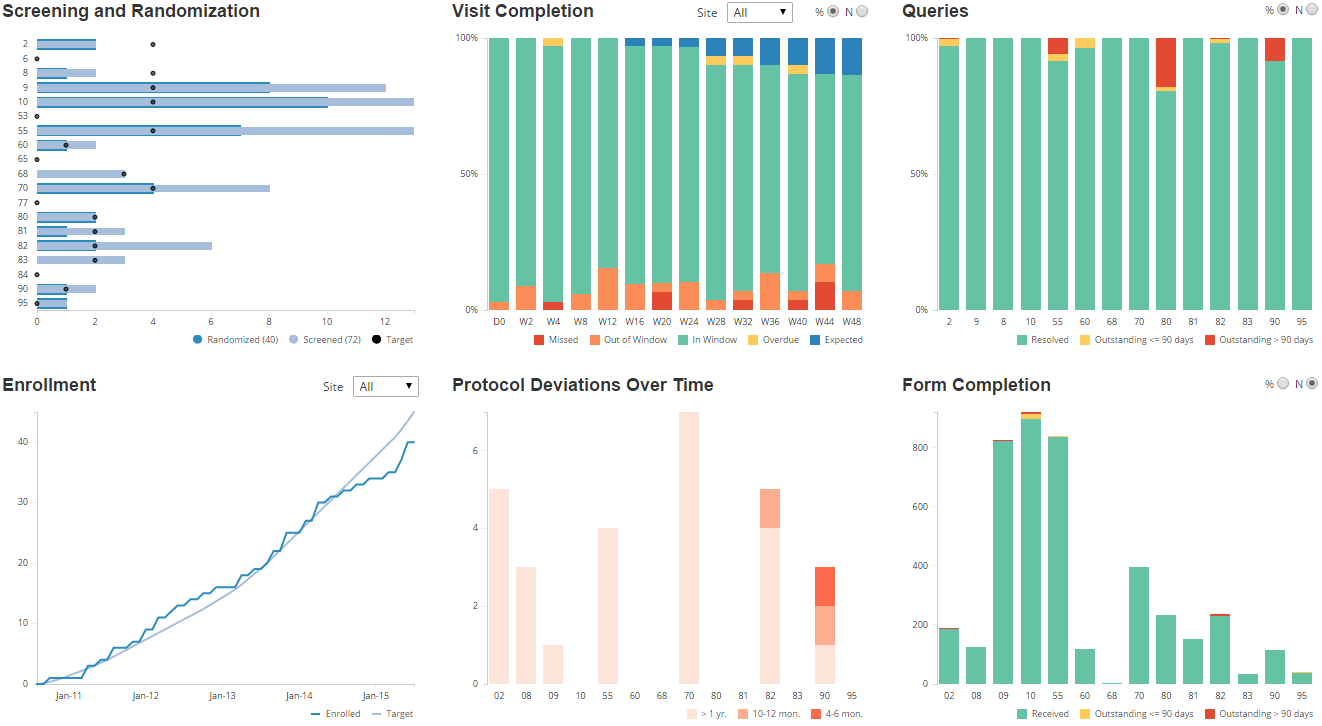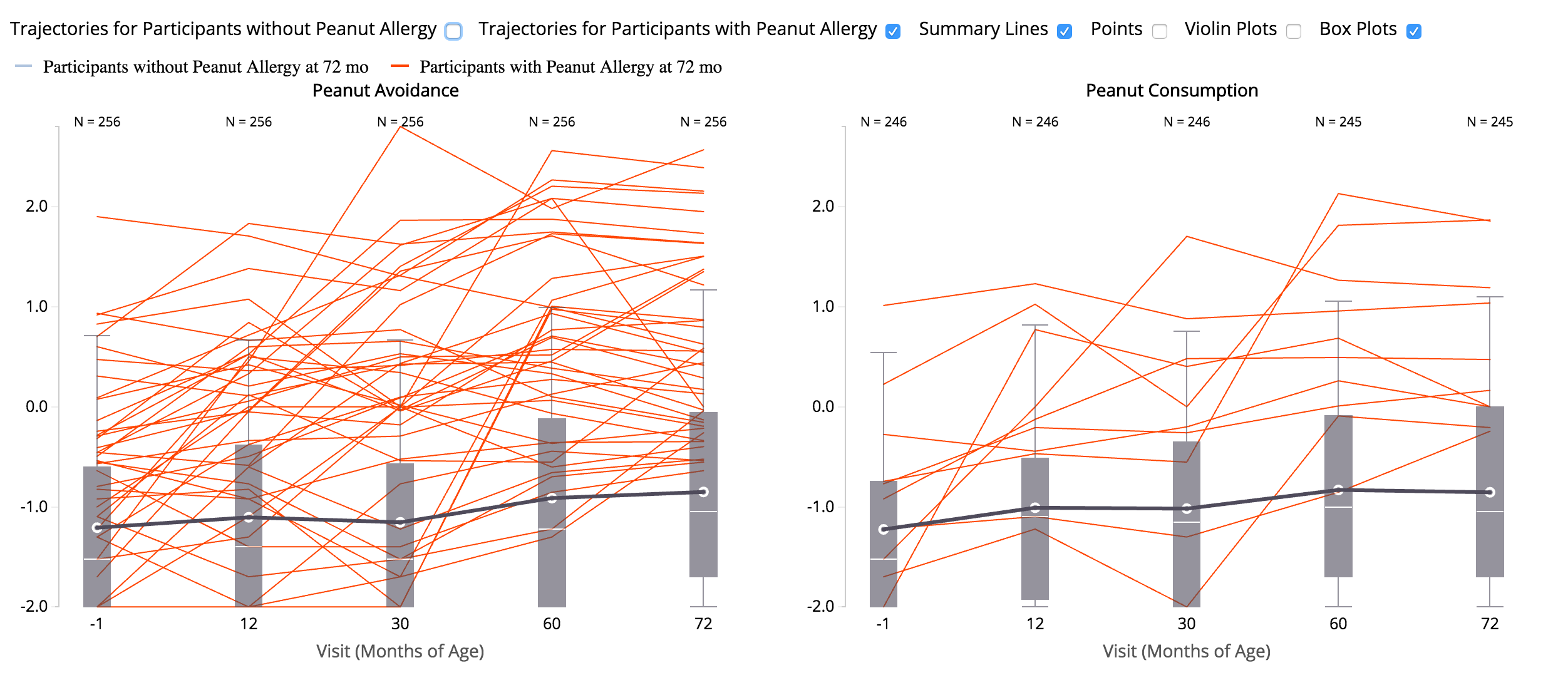Home / Explore Insights / Webcharts: A Reusable Tool for Building Online Data Visualizations
/ Insights / Explore Insights / Webcharts A Reusable Tool For Building Online Data Visualizations
Webcharts: A Reusable Tool for Building Online Data Visualizations
This is the second in a series of posts introducing open source tools Rho is developing and sharing online. Click here to learn more about Rho’s open source effort.
When Rho created a team dedicated developing novel data visualization tools for clinical research, one of the group’s challenges was to figure out how to scale our graphics to every trial, study, and project we work on. In particular, we were interested in providing interactive web-based graphics, which can run in a browser and allow for intuitive, real-time data exploration.
Our solution was to create Webcharts – a web-based charting library built on top of the popular Data-Driven Documents (D3) JavaScript library – to provide a simple way to create reusable, flexible, interactive charts.
Interactive Study Dashboard
Track key project metrics in a single view; built with Webcharts (click here for interactive version)
Webcharts allows users to compose a wide range of chart types, ranging from basic charts (e.g., scatter plots, bar charts, line charts), to intermediate designs (e.g., histograms, linked tables, custom filters), to advanced displays (e.g., project dashboards, lab results trackers, outcomes explorers, and safety timelines). Webcharts’ extensible and customizable charting library allows us to quickly produce standard charts while also crafting tailored data visualizations unique to each dataset, phase of study, and project.
This flexibility has allowed us to create hundreds of custom interactive charts, including several that have been featured alongside Rho’s published work. The Immunologic Outcome Explorer (shown below) was adapted from Figure 3 in the New England Journal of Medicine article, Randomized Trial of Peanut Consumption in Infants at Risk for Peanut Allergy. The chart was originally created in response to reader correspondence, and was later updated to include follow-up data in conjunction with a second article, Effect of Avoidance on Peanut Allergy after Early Peanut Consumption. The interactive version allows the user to select from 10 outcomes on the y-axis. Selections for sex, ethnicity, study population, skin prick test stratum, and peanut specific IgE at 60 and 72 months of age can be interactively chosen to filter the data and display subgroups of interest. Figure options (e.g., summary lines, box and violin plots) can be selected under the Overlays heading to alter the properties of the figure.
Immunologic Outcome Explorer
Examine participant outcomes for the LEAP study (click here for interactive version)
Because Webcharts is designed for the web, the charts require no specialized software. If you have a web browser (e.g., Firefox, Chrome, Safari, Internet Explorer) and an Internet connection, you can see the charts. Likewise, navigating the charts is intuitive because we use controls familiar to anyone who has used a web browser (radio buttons, drop-down menus, sorting, filtering, mouse interactions). A manuscript describing the technical design of Webcharts was recently published in the Journal of Open Research Software.
The decision to build for general web use was intentional. We were not concerned with creating a proprietary charting system – of which there are many – but an extensible, open, generalizable tool that could be adapted to a variety of needs. For us, that means charts to aid in the conduct of clinical trials, but the tool is not limited to any particular field or industry. We also released Webcharts open source so that other users could contribute to the tools and help us refine them.
Because they are web-based, charts for individual studies and programs are easily implemented in RhoPORTAL, our secure collaboration and information delivery portal which allows us to share the charts with study team members and sponsors while carefully limiting access to sensitive data.
Webcharts is freely available online on Rho’s GitHub site. The site contains a wiki that describes the tool, an API, and interactive examples. We invite anyone to download and use Webcharts, give us feedback, and participate in its development.
Jeremy Wildfire, MS, Senior Biostatistician, has over ten years of experience providing statistical support for multicenter clinical trials and mechanistic studies related to asthma, allergy, and immunology. He is the head of Rho’s Center for Applied Data Visualization, which develops innovative data visualization tools that support all phases of the biomedical research process. Mr. Wildfire also founded Rho’s Open Source Committee, which guides the open source release of dozens of Rho’s graphics tools for monitoring, exploring, and reporting data.
Ryan Bailey, MA is a Senior Clinical Researcher at Rho. He has over 10 years of experience conducting multicenter asthma research studies, including theInner City Asthma Consortium (ICAC) and the Community Healthcare for Asthma Management and Prevention of Symptoms (CHAMPS) project. Ryan also coordinates Rho’s Center for Applied Data Visualization, which develops novel data visualizations and statistical graphics for use in clinical trials.


